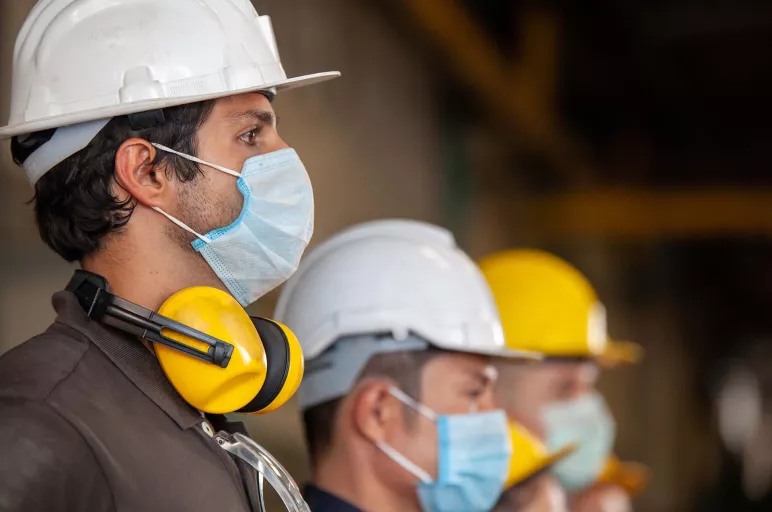
COVID-19 Is Bringing a Paradigm Shift in EPC Sourcing
August 04, 2020 | Professional Services
Engineering firms recorded revenues of $103.24 billion in 2019, up 2.1% from 2018. While the engineering market was expected to witness optimistic growth in 2020, the impact of COVID-19 has dynamically increased the uncertainty associated with engineering and construction activities.
The COVID-19 pandemic presented a host of challenges to the engineering and construction industry with delays, loss in efficiency and cost overruns caused by different regional regulatory responses. Some contractors, subcontractors, suppliers and sources of labor were not be affected significantly and continued to operate as they were considered “essential services” by their government.
Category Risks
Supply issues surrounding construction equipment and materials are expected to continue to a higher degree from Asia and to a lesser degree from the EU. This could cause project delays in currently funded projects or reduced spending on future projects. Such a scenario could also trigger cash-flow liquidity challenges and difficulties in managing debt obligations. Thus, companies may consider engaging with engineering firms that have strong global supply chains and are capable of reshoring the manufacturing of necessary materials in the region of the development site.
Nearly 40% of engineering firms were forced to lay off employees due to project cancellations and shortages of equipment or materials, amid the COVID-19 crisis. Additionally, as a significant portion of the work must take place on-site and cannot be done remotely, companies are preferring smaller crews, operating for longer shifts. Labor scarcity and fewer labor mix options may lead to the risk of spending more on engineering and construction teams to complete ongoing projects or to start new engineering projects that are critical for business continuity.
Widespread construction site shutdowns owing to labor shortages and safety concerns have made contractors and subcontractors vulnerable to bankruptcy. An example is McDermott International filing for bankruptcy process to eliminate $4.6 billion in debt. To make this situation tenable, governments are providing stimulus packages in the form of tax benefits or direct cash disbursals. A revised bill on the Paycheck Protection Program is also expected to stabilize the labor market in the engineering and construction industry and mitigate the cost overruns to labor scarcity.
Long-Term Paradigm Shifts in Procurement Strategies
More than 80% of design engineering firms have responded to the COVID-19 situation with remote engineering design operations. Cloud-based dashboards enable several different functions like cloud-based CAD systems, conferencing and ERP software, as well as maintenance planning tools and several remote desktop programs. Thus, clients can view the processed data and navigate through project sites using software viewers and maintain effective communication with their engineering service providers. AECOM launched an interactive web-based tool that allows engineers to engage and consult clients using virtual interfaces. Through the new platform, a virtual event can be personalized to show consultation materials, including virtual reality (VR) and sound demonstrations, videos, maps and plans.
To reduce spend on training, additional PPE and cleaning materials, companies are considering potential workforce scenarios like increasing the outsourcing of certain onsite job roles that were traditionally carried out in-house. Such changes are expected to lower operating costs and would also eliminate capital maintenance expenses. Companies are also increasingly using 3D laser scanning and drones for site audits and supplier assessments, to remotely keep track of progress and identify engineering errors. The use of technology in engineering assessment will reduce the cost companies usually spend on travel, improve structural reliability and detect errors early.
Outlook for the Future
As COVID-19 continues, most countries have begun to ease restrictions on engineering and construction work. The big question for the engineering industry is what will the market landscape look like in the next few years? The crisis has proved that traditional operations may rapidly become obsolete with an increase in the use of remote engineering and construction services. The workforce of the future will be an efficient and cost-effective mix of remote professionals and necessary on-site professionals, thus improving labor productivity and the reliability of engineered structures and reducing traditional overheads like travel.
Sources
- https://www.pwc.com/us/en/library/covid-19.html
- https://www2.deloitte.com/us/en/pages/advisory/articles/impact-of-covid-19-on-capital-projects-and-construction-programs.html
- https://www.enr.com/articles/49508-congress-approves-still-more-changes-in-paycheck-protection-program
- https://www.enr.com/articles/49166-nearly-40-of-firms-have-laid-off-workers-new-agc-survey-says
Turn ideas into action. Talk to GEP.
GEP helps enterprise procurement and supply chain teams at hundreds of Fortune 500 and Global 2000 companies rapidly achieve more efficient, more effective operations, with greater reach, improved performance, and increased impact. To learn more about how we can help you, contact us today.

David Doran
Vice President, Consulting
David has over 20 years of experience in leading several large-scale consulting and sourcing engagements for transport and logistics at Fortune 500 companies.
A recognized leader in supply chain management and logistics, David plays a critical role in the design, sourcing and implementation of supply chain improvements to GEP’s global clients.



